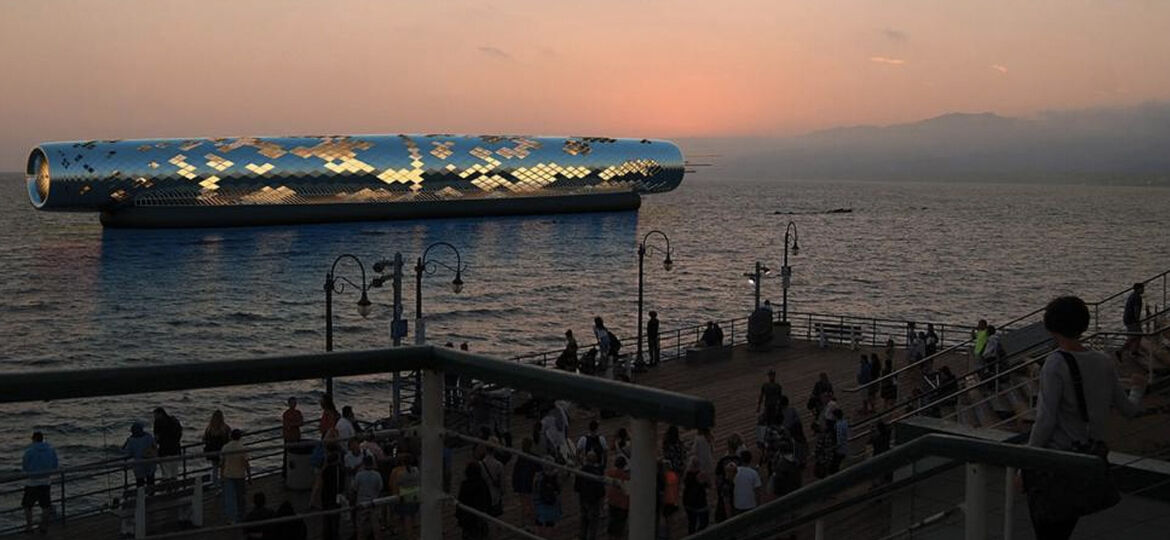
WHY THIS MATTERS IN BRIEF
The Pipe is a finalist in the 2016 Land Art Generator Initiative, a competition to combine clean energy production with public art.
Is it public art, or is it a power station? This shimmering design for “The Pipe”, a finalist in the 2016 Land Art Generator Initiative (LAGI), is intended to blur the lines between the two. Imagined here as a floating installation off the coast of Santa Monica, California, the Pipe is an electromagnetic desalination device, powered by the sun. It also looks great on the horizon.
In that regard, it perfectly reflects the premise of the LAGI design competition, which this year invited participants to come up with aesthetically pleasing concepts for electricity and clean water generation that could potentially be placed in the waters near Santa Monica Pier as examples that our increasing demands for power need not blight the landscape (or seascape).
As was first reported by Inhabitat, The Pipe was designed by the Canadian engineering firm Abdolaziz Khalili and Associates, which specialises in processing plants for the food, drink and packaging industries. The glittering silver tube could, the firm says, generate 10,000 MWh of electricity annually, powering an electromagnetic filtration system capable of pumping out 1.5 billion gallons of clean drinking water for the city over the same period.
“What results are two products – pure drinkable water that is directed into the city’s primary water piping grid, and clear water with 12 per cent salinity,” the design brief explains.
“The drinking water is piped to shore, while the salt water is redirected back to the ocean through a smart release system, mitigating most of the usual problems associated with returning brine water to the sea.”
Artist Elizabeth Monoian and her architect husband Rob Ferry founded LAGI in 2008, to encourage the design of public art installations that also produce clean energy.
“Now, more than ever, energy and water are intertwined. As California faces severe water shortages in the coming years, the amount of energy required for water production and transmission is sure to increase,” the couple write on the competition website.
“As the infrastructures that will cleanly power our future productivity become more prevalent in our commercial and residential centres, the issue of their aesthetic integration becomes more important,” the founders argue.
“Power plants, once unseen and forgotten, will become an integral part of our daily lives.”
The other entries in this year’s contest include a balloon sightseeing ride that generates solar power, a 40-metre high orb that appears to float on the Pacific, and giant swan sculptures that convert wave power into clean energy. The winner will be announced on 6 October.

















Outta sight! 🙂